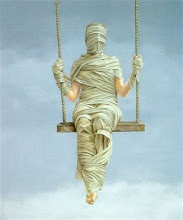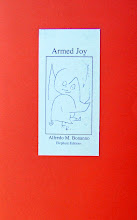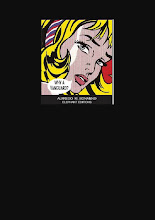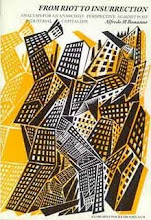From: ‘Nuclei autonomi di base’, Teoria e partica dell’insurrezione, Catania, 1984, pp. 112-117.
Analysis of instruments of struggle cannot leave out of consideration an evaluation of the conditions under which the struggle is taking place. To prepare an instrument that is capable of attacking and defeating the project of the bosses therefore requires an analytical effort that goes beyond what the mere technicalities of the instrument might lead one to suppose.
Autonomous base nuclei are minimal instruments of intervention in the reality of the struggle. They are the smallest organisational form, which allow one to reconstruct—at the level of the revolutionary—individual tissue which always runs the risk of tearing on contact with daily solicitations. An old or a new instrument of struggle? The answer is not simple. The long history of exploitation sees the stubborn reappearance of forms which often come to be rejected at certain phases in the struggle, only to re-emerge then be rejected once again. Only an outsider would see these ‘returns’ as mere revarnished trophies of the past. In substance, an instrument of struggle takes on a meaning (not just a ‘new’ meaning) when it establishes a meaningful relationship with the level of the clash in course. In the case of the contrary not only will it not be a ‘new instrument’, it will not be an instrument at all, merely a conditioned reflux of power itself.
The spectacular phase of capitalist dominion is tending to recede today. The element of representation which allowed for the transferral of life to within preestablished limits of the rhythms of exchange, transforming man and his things into symbolic abstractions, has taken the form of repetitiveness. Relations of exchange in which a presumed harmony was reached have now become repetition, changing not only the relationship of man and his things within the process of production, but also that of man and time. With the coming about of the dominion of repetitiveness time is stored, packaged.
Let us take two borderline cases. The organisation of production was aimed at the ‘make believe’ of a world where violence entered the spectacle of the elimination of violence within the harmony of production. The factory was a miniature model of the harmonious society where social conflicts were resolved in the approximate (but always satisfactory) resolution of the bosses’ technical problems. Production took on fideistic aspects. Commercial exchange came to be lived through the rationalisation of scientific knowledge. The spectacle of production became the spectacle of harmony. Not only did it serve to create the conditions of established order, it became possible to ‘believe’ in the existence of the latter, and its universal value. The typical worker complied with these conditions of existence perfectly and, in exchange for a part of the social product, accepted the defence of his own state of servitude. Those who were excluded by the process of differentiation which capital renders indispensable, summed up their rage in terms of ‘lack of acceptation’, leading to violent destructive explosions and progressive englobing to within the area of wage earning.
Another minority proclaimed itself within this spectacle: the seekers of fire, forefathers of the present day negators of any condition of exchange. Reference to the drug addict is obligatory. The seeker of fire, as well as belonging to a restricted minority, constituted the most coherent response to the formal dominion of capital and its representative spectacular order (dominion). Like the factory, the consumption of drugs required a very closed framework, an obligatory place where wealth was produced or destroyed (which is the same thing). To drug oneself openly would have been unthinkable, just as production ‘islands’ or working days organised as one wanted was. Money was the maximum form of the meaningful, either in the abstract form of actual wealth or as an instrument of spectacular exchange.
The factory and the opium den both required the spectacle of the exorcizing of violence. The mythical sacrifice was consumed (and in many ways is still consumed in more backward conditions of capital) to prevent real explosions of violence.
Let us look at the second borderline case. Production is no longer simply aimed at ‘making believe’ in a world of values which, beyond the spectacle of absurd preestablished harmony, has no sense whatsoever. A more immediate, measurable aim is being programmed, that of repetitiveness. No longer the reassembling of qualitative contrasts in a fictitious global harmony, but a summing up of uniformities. If once one was pushed to buy a TV, now one is pushed to buy whole TV programmes, the stock of sports, cultural, culinary, musical, etc., programmes. The model of value is precisely this accumulation. The equivalent of consumerism will be drowned in this generalised need for unity of product. Clothes will all be the same, cars all the same, films all the same, sexual acts all the same, gestures, words all the same. The very capacity to grasp differences will weaken to the point of disappearing. Comic strips educated us a long time ago concerning the magic of reiteration. We do not enjoy a strip of Charlie Brown for its novelty but for the way its novelty dialogues within an absolute, mortifying repetitiveness. The same goes for Diabolik. Special prisons apply this technique to the full: they are no longer places where blood spatters the walls, but where the obsessional repetition of gestures has almost completely taken the place of the blood-curdling representation of the torture of the past. Repetition is an incredible factor in the scale of integration between production and consumption. Once separate moments from within the representative cycle of exchange, today the latter unite to the point of confusing themselves the one with the other. In this way power normalises the different, centralises the specific, homogenises the dissociated.
The majority of them (again the drug addict cannot be left out) are no longer seekers of fire. The will to penetrate the unknown is spent. There is no longer a search to open up levels of experimentation: repetitiveness has taken the place of representation. Capital no longer needs to ‘make believe’, now it can simply keep quiet, pushing people to produce/consume to be ‘like the others’ and not in order ‘to distinguish themselves from others’. By consuming the consumer reproduces himself as such, belonging to a social group of consumerism/production, no longer isolated individual/consumer/producer. Identity only renders intelligible the differences between social groups, not those within the group itself. There is no longer any shame attached to wearing, in thousands, the same pair of jeans. On the contrary, acceptation of this uniformity—which has been programmed by capital—is sought after and considered with a kind of fascination which the search for the different never had in the past.
Now let us face the second part of this text, that aimed at looking into the operative conditions of the instrument of struggle we have referred to as autonomous base nuclei. The spirit of revolutionary syndicalism always present somewhere in these autonomous organisational forms seems, in the face the changing conditions of capital, destined to disappear. A struggle at the level of claims takes for granted a dialogue with the bosses on the basis of a possible readjustment of wage contrasts. The mistake made in the past was to consider engagement in that direction positive, because a positive outcome gave a wider field of action to the producers themselves. This has now been channelled by capital first towards the sacrificial representation of the negation of violence, then towards the homogenisation of the behaviour of consumer/producer.
That does not mean denying the validity of permanent conflict. The class clash marks the drastic limit beyond which lies the bloody mist of reactionary interclass collaboration. It is just that our enemy has mined the road with traps and it is important not to fall into them. One of these traps is the nullification of the increase in real wages. It is not true that it is possible to buy more with a wage increase, the same things are simply bought at a higher price. But the trap is that one buys the ‘same things’. Moreover, the greatest trap is that we are happy and content to buy the same things that others buy.
The unification of the equation production/consumption allows for the realisation of a struggle front as never before. Today the figure of the ‘privileged producer’, the worker who saw himself as different to the disinherited or lumpenproletarian no longer exists. At the technical level of production such distinctions are still operative but they are disappearing. Hammering on the need for repetition, power has obtained the great result of detaching privileged producers from consumer goods which were ‘luxuries’ compared to the increasingly large minorities, resulting in outbreaks of social conflict that are increasingly difficult to control. It has also had to pay the price of opening the road to a recomposition of the class front. The decomposition of production (and therefore of consumerism), the so-called crises, should have far more serious effects now than in the phase of formal dominion where the process of representation was able to keep productive strata separate from those excluded from wage earning. A sudden break up of uniformity could produce phenomena of mass rebellion compared to the little hysterical crises which came about in the opium dens of the past.
Claims for real wage increases are coming to be made in a different way however, obliging the institutions of class dominion to give in on the question of nominal increases. From individual appropriation to collective expropriation, from bad work to techniques of absenteeism, from collective reduction to collective destruction, from sabotage to public denunciation, from counter-information to the search for one’s capacity to self-organise: everything must be used in an anti-boss dimension. But the vital element of transformation must be in the attempt to destroy the grandiose apparatus of repetitiveness, the homogenisation of the individual. In breaking up this repressive apparatus one endangers the very relationship consumption/production and the minimal conditions for attack are realised, allowing one to safeguard the creativity of the struggle.
The mythology of the past: the logo, the slogans, the ‘analyses that explained everything’, sacred monsters of a time which seemed close to the revolution, must be substituted with inventiveness, simplicity, modesty, awareness of one’s limitations and one’s possibilities. A nucleus is not a gymnasium of the revolution, it is not the point of reference which will overcome the order of capitalism, perhaps it is not even an adequate instrument of struggle, but it could become all this and far far more: it could become the small grain of sand that jams the machinery of capital.
skip to main |
skip to sidebar

Some writings of Alfredo Maria Bonanno in English, or almost

Alfredo Bonanno was arrested on October 1st 2009 in Greece, accused of concourse in robbery. With him, anarchist comrade Christos Stratigopoulos.
Here are a few translations and part translations of a small portion of Alfredo's writing. This is a work in progress, many of the translations are as yet incomplete. Open links to find more of Alfredo's work.
Alfredo Bonnano Released
Nov. 22 Alfredo Bonnano was sentenced to 4 years imprisonment (which practically means that with the time served so far and the fact that he is over 70years old HE IS RELEASED
Christos Stratigopoulos (who took responsibility for the action)
was sentenced to 8 years and 9 months with the Greek law will probably be released at the end 2011
BY ANY MEANS NECESSARY
LINKS
click on any of these labels to read text
- "Community" sickness
- 1981 - Editorial
- A Critique of Syndicalist Methods
- A few notes on Sacco and Vanzetti
- A few notes on the revolutionary movement in Italy
- A little man in Singapore
- A million jobs
- A question of class
- Affinity
- After Marx autonomy
- Albania Laboratory of Subversion (Introduction)
- Anarchism and the national liberation struggle
- Anarchists and action
- AND WE WILL ALWAYS BE READY TO STORM THE HEAVENS AGAIN (Against amnesty)
- ANTI-INSTITUTIONAL MOVEMENT
- Are we modern?
- Armed Joy
- ARMED STRUGGLE. SOME REFLECTIONS.
- Autonomous base nuclei
- beyond syndicalism
- Beyond workerism
- But what is the imaginary?
- Class War
- Comiso - Organizational document of the self-managed leagues
- Considerations on illegality
- Dissonances (Introduction)
- Elephant Editions 1986
- Excluded and included
- Farewell to claiming
- Feral Revolution (Introduction)
- FICTITIOUS MOVEMENT AND REAL MOVEMENT
- For an Antiauthoritarian Insurrectionist International - Proposal for a debate
- From riot to insurrection
- From the centre to the periphery
- Good technology
- Guerilla Extraordinary
- Habits and idols
- Hegel
- I know who killed chief superintendent Luigi Calabresi
- Illegality
- Illness and capital
- Informal organisation
- Insurrection
- Internationalism
- Introduction to Sabate
- Introduction to Anarchism and Violence
- Introduction to Bratach Dubh English edition of Malatesta's Fra Contadini
- Introduction to Insurrectionalist Anarchism
- Introduction to Strange Victories
- Introduction to The Conquest of Bread
- Involuntary aspects of voluntary work
- Let's destroy work
- LET'S DESTROY WORK. New introduction
- Let's keep our feet on the ground please
- Lightening Conductors and Stand-ins - more shots of non-news
- Lightning Conductors and Stand-ins
- Lightning Conductors and Stand-ins (cont.)
- Locked up
- Looking forward to self-management
- Loss of language
- More on internationalism
- National Liberation Struggle
- nineteen years on
- No more crises
- Non-news about drugs
- Non-news about racism
- Ode to the Uniform
- On Feminism
- One's life on the line
- Order and chaos
- Otto Ruhle (Introductory Note)
- OUR ROLE IN THE PRESENT CONFLICT
- Palestine mon amour
- Pantagruel anarchist review
- Pinelli
- Prison and Prisoners’ Struggles - Introduction
- Propulsive Utopia
- Quality and the factory
- Restructuring Capital and the new democracy
- Revolution - Violence - Antiauthoritarianism
- REVOLUTIONARY VIOLENCE
- Science and the social revolution
- Self-management
- Severino Di Giovanni in Argentina 1923-1931 by Osvaldo Bayer
- Social banditry
- SOME NOTES -
- Space and Capital
- Stirner
- Stop the City? From information to attack
- Strategy and Methods
- Streamlined production
- The "end" of the crisis
- The aesthetics of anarchism
- The anarchist tension
- The area of autonomy and the anarchist movement in Italy
- The armed wing of science
- The Cruise missile base at Comiso can be prevented
- The ethical bank
- The insurrectional project
- THE LANGUAGE OF TECNICS -
- The logic of insurrection
- The moral split
- THE NECESSARY DESTRUCTION -
- The priority of practice
- The refusal of arms
- The revolutionary project
- The revolutionary struggle
- The significance of an insignificant event
- The struggle for self-managed social space
- The tyranny of weakness
- The whole and the part
- The young in a post industrial society
- Theory and action
- Towards anarchist antimilitarism
- TOWARDS THE GENERALISATION OF ARMED STRUGGLE
- TRANSFORMATION IN THE WORLD OF WORK AND SCHOOL -
- TRUTH -
- Unemployment in Italy - How come everything doesn't explode?
- Untitled
- Violence and non-violence
- What are anarchists
- What can we do with anti-fascism?
- Why a vanguard?
- Why Insurrection
- World domination in a few words











